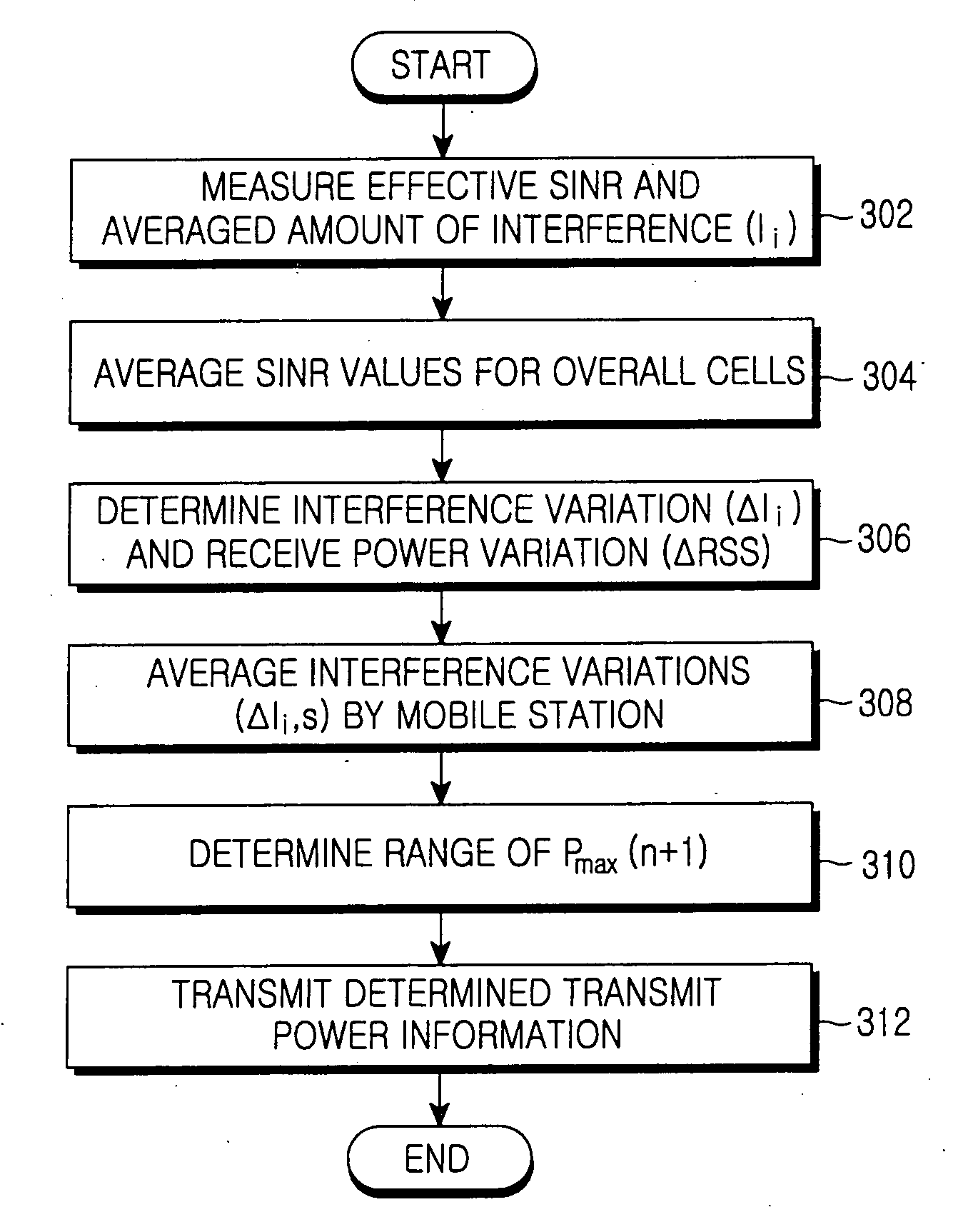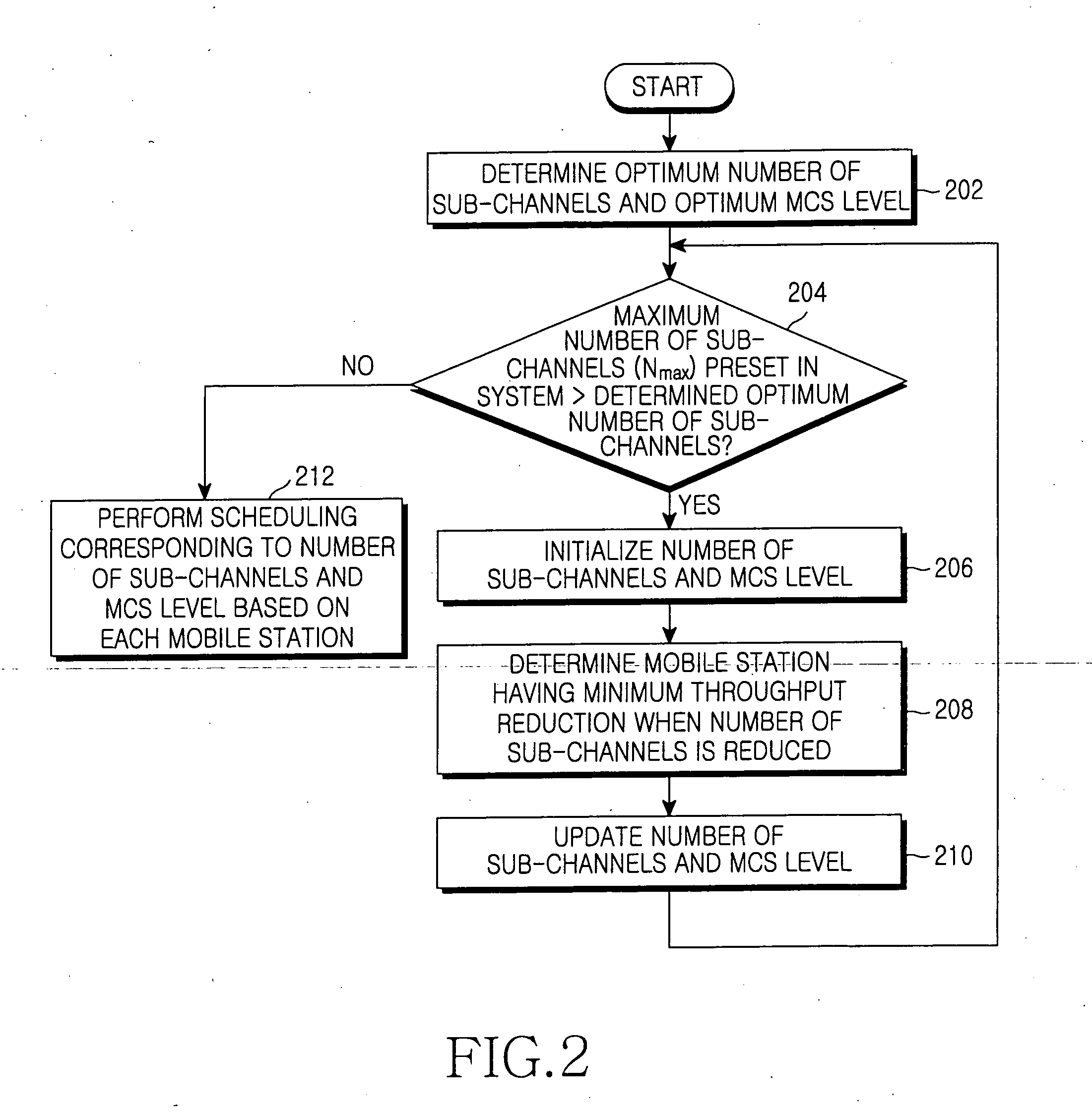Method for uplink scheduling in communication system using frequency hopping-orthogonal frequency division multiple access scheme
- Summary
- Abstract
- Description
- Claims
- Application Information
AI Technical Summary
Benefits of technology
Problems solved by technology
Method used
Image
Examples
embodiment 1
The Sub-Channel Allocation Scheme
[0030]FIG. 1 is a view illustrating a cellular structure applicable to the present invention. It is assumed that the number of the total sub-channels is N, and M mobile stations belong to each cell in the cellular structure having a frequency reuse factor of 1. The mobile stations use sub-channels to transmit / receive data in every frame according to a predetermined hopping rule. All of the mobile stations transmit using a transmission power which is less than or equal to a preset maximum transmission power (Pmax). Herein, it is assumed that the sub-channels allocated to each mobile station have uniformly distributed power. A signal of a mobile station 150 positioned at the ith cell acts as an interference signal of a neighboring cell (i.e., lth cell).
[0031] The system with Nc equal-size hexagonal cells is considered. The number of sub-channels which can be used by a mobile station m in the ith cell is Ni,m (ΣMm-1Ni,m≦Nmax). Herein, the Nmax denotes...
embodiment 2
The Effective Power Control Scheme
[0040] Hereinafter, a scheme for effectively controlling power according to the second embodiment of the present invention will be described.
[0041] The FH-OFDMA communication system performs frequency hopping based on probable statistics capable of averaging interference of the overall frequency band. Thus, defining a scheme for effectively controlling power using the FH-OFDMA scheme characteristic of averaging the interference of overall frequency band.
[0042] In more detail, a base station of a home cell including a mobile station receives an averaged amount of interference and an SINR value information from a neighboring cell using the same frequency as the home cell. The mobile station controls its power using the received information and a link gain known to the mobile station. In other words, the mobile station is capable of not only restricting an amount of interference exerted on the neighboring cell, but also increasing the amount of tran...
embodiment 3
Integration Scheme for the First and Second Embodiments
[0061] The third embodiment of the present invention is obtained by integrating the scheme for allocating sub-channels according to the first embodiment of the present invention with the scheme for effectively controlling power.
[0062] In other words, according to the third embodiment of the present invention, the maximum available transmit power level, Pi,m,max, set according to the system realization is determined, and the number of sub-channels to be allocated to each mobile station is determined based on the Pi,m,max. Thereafter, it is possible to control an amount of interference exerted on neighboring cells by adaptively controlling transmit power levels of mobile stations in the home cell according to SINR values of the neighboring cells. Herein, it is assumed that mobile stations belonging to one cell are allocated with the same number of sub-channels.
[0063]FIG. 4 is a flowchart illustrating a procedure of integrating ...
PUM
 Login to View More
Login to View More Abstract
Description
Claims
Application Information
 Login to View More
Login to View More - R&D
- Intellectual Property
- Life Sciences
- Materials
- Tech Scout
- Unparalleled Data Quality
- Higher Quality Content
- 60% Fewer Hallucinations
Browse by: Latest US Patents, China's latest patents, Technical Efficacy Thesaurus, Application Domain, Technology Topic, Popular Technical Reports.
© 2025 PatSnap. All rights reserved.Legal|Privacy policy|Modern Slavery Act Transparency Statement|Sitemap|About US| Contact US: help@patsnap.com



